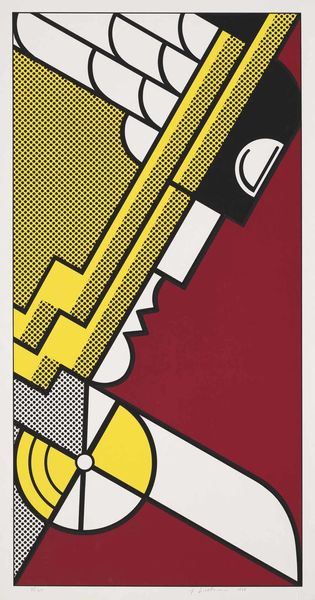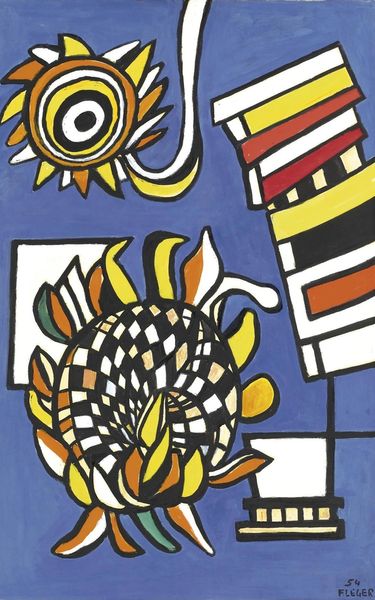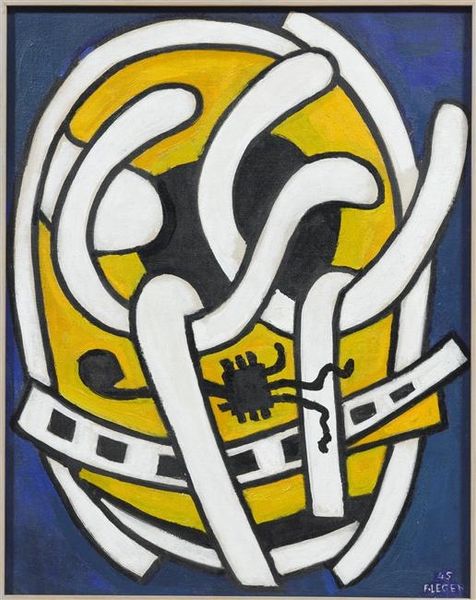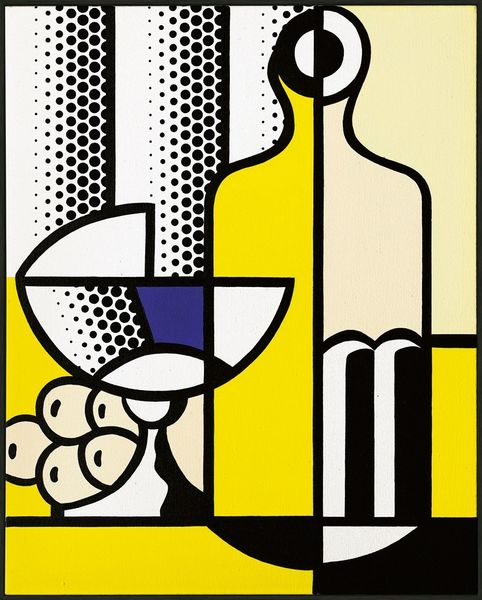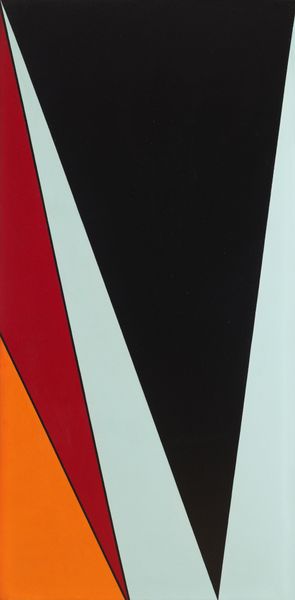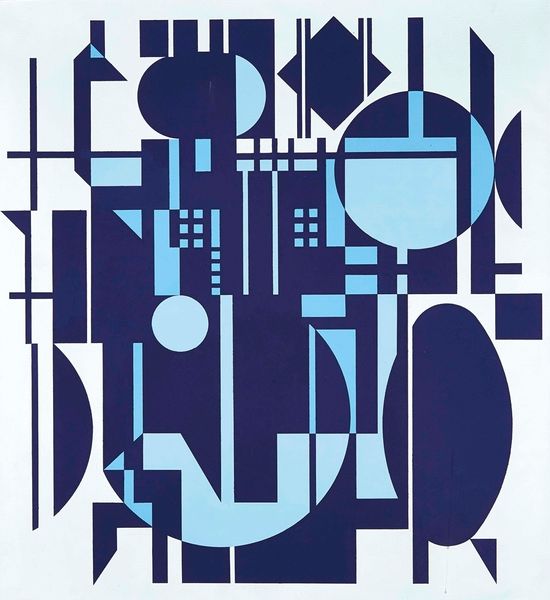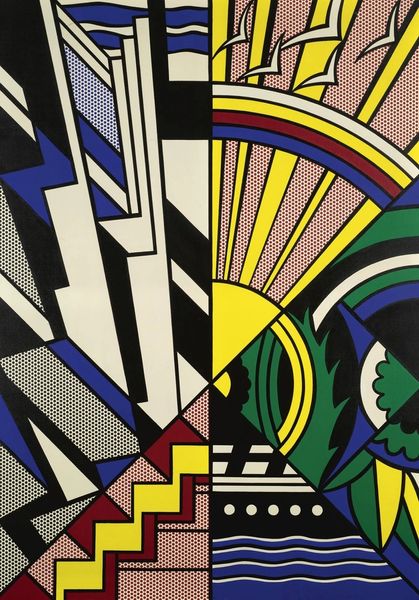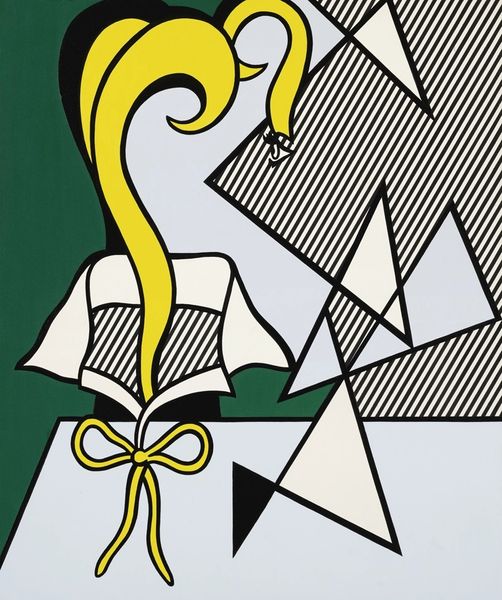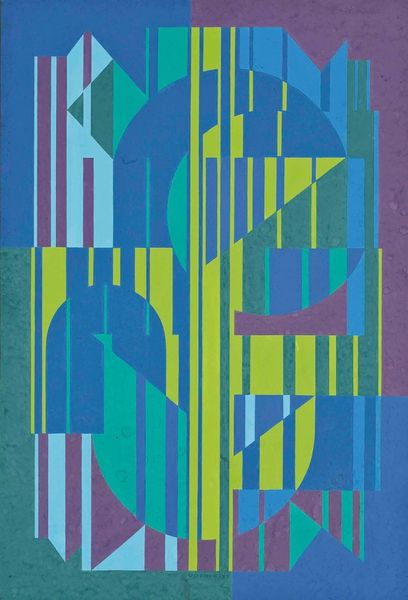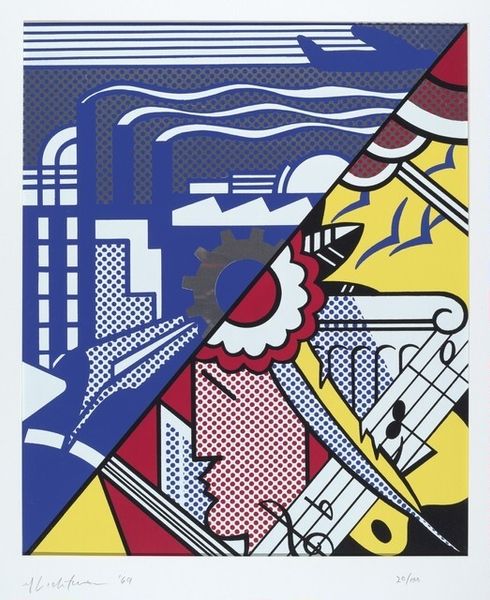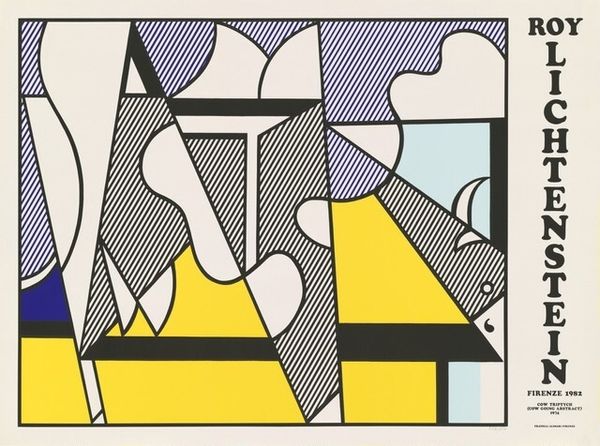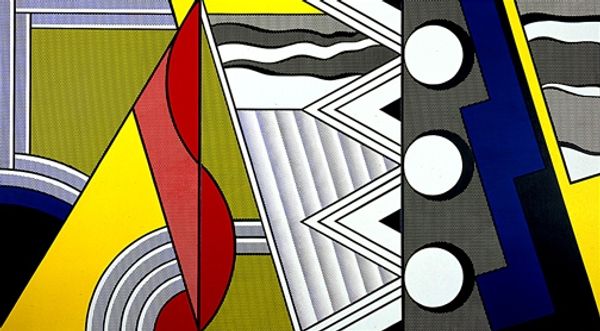
Copyright: Modern Artists: Artvee
Curator: Here we have Roy Lichtenstein’s "Bicentennial Print," created between 1975 and 1976. It’s a mixed-media print incorporating collage and screenprint techniques. Editor: It’s immediately striking, this organized chaos. It feels both celebratory and disjointed, with those strong lines sectioning off seemingly unrelated images. I'm picking up on a fragmented narrative of American identity. Curator: Lichtenstein was deeply interested in the power of graphic symbols and visual communication. Note the strategic deployment of visual shorthands like a rising sun or a section of greek-style fret, all laden with layered historical resonance, filtered through his signature Pop Art sensibility. Editor: Exactly! The composition almost mimics the chaotic, over-saturated visual landscape of consumer culture. Those standardized geometric abstractions read like capitalist iconography rendered impersonal. And it’s all done in a deliberately flat style; no depth, no perspective. He critiques the American spectacle. Curator: I agree. But Lichtenstein is doing something more subtle, too. Think about the title. It’s commemorative of the Bicentennial, an event dripping with the mythos of the American narrative. But Lichtenstein splinters the mythology through these disparate images. Each symbolizes a piece, but refuses to cohere in a predictable way. Editor: Which reflects the actual experience of a nation founded on contradictions. This print, made nearly 200 years after that founding, doesn't give us a sanitized, celebratory historical painting, does it? This acknowledges the cracks. It shows a deliberately obscured picture of what America actually is. Curator: Lichtenstein presents cultural continuity through discordance. Each component still holds a cultural echo, and through their combination, the cultural image takes a new meaning. His treatment reminds me of a Cubist strategy of fracturing form, opening visual form to multiple simultaneous readings. Editor: Yes. It questions that singular historical narrative and welcomes diverse, potentially conflicting interpretations of what it means to be American in the 1970s, and now, half a century later, this piece keeps questioning what a collective, shared American identity even looks like. Curator: Considering our dialogue, it seems clear the image contains complex iconography to be parsed. I think that the effect will vary, but to some viewers, this is undoubtedly a mirror to their own ideas about nationhood and heritage. Editor: For me, this work reveals how identity—national or otherwise—is always a collage, a constructed, contested space. It’s never complete and it’s always subject to change.
Comments
No comments
Be the first to comment and join the conversation on the ultimate creative platform.
